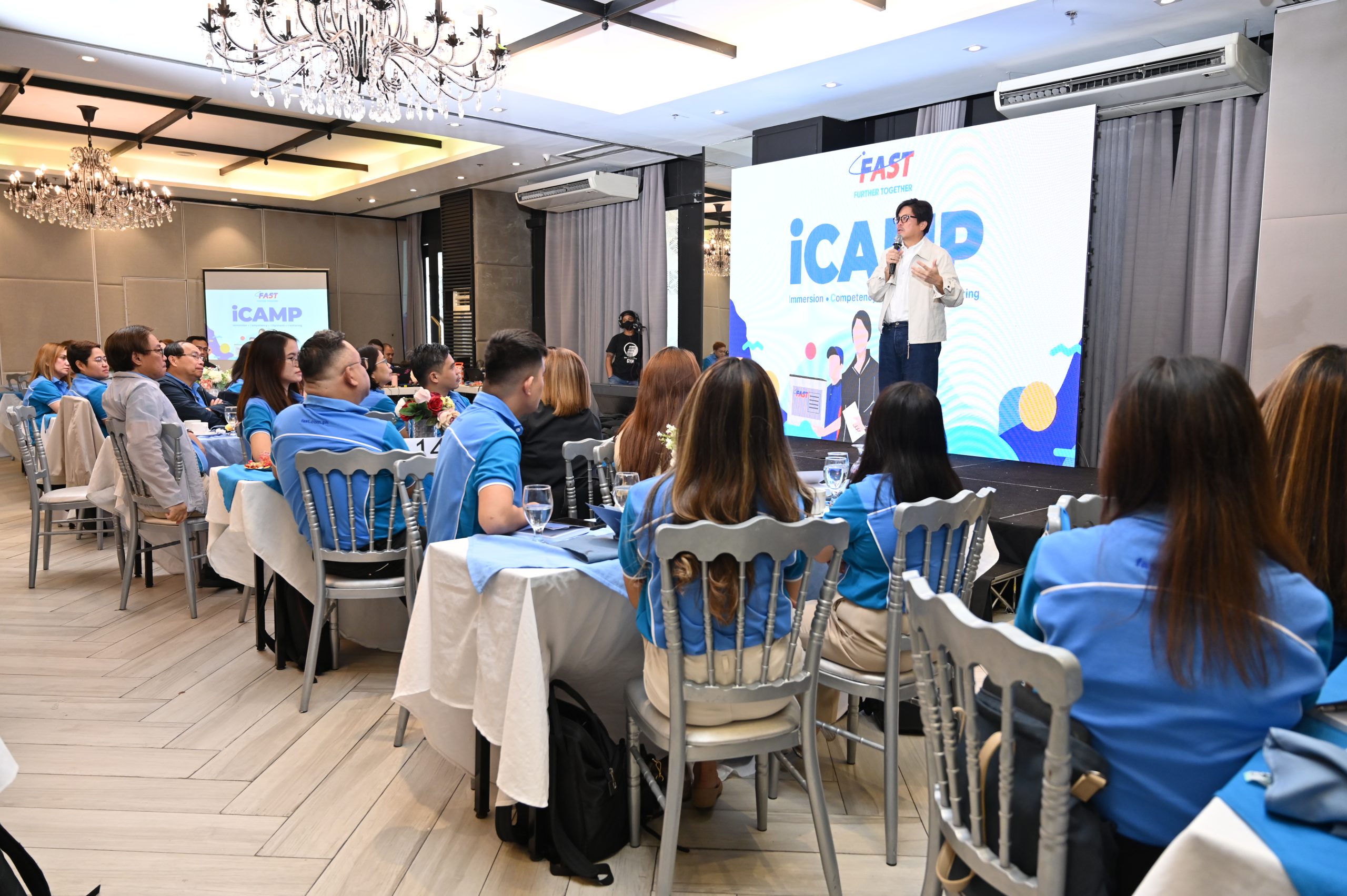
FAST Logistics Group, the leading end-to-end logistics and selling distribution company in the Philippines, dives into the key questions managers should ask when designing an employee training program to support sustainable business growth.
Effective employee training programs are vital in ensuring business success and sustainable growth. With the constant changes and challenges in the workplace, Philippine companies should continuously enhance their employees’ competencies through innovative training methods to maintain a competitive edge in the market.
Hence, designing effective training programs should not solely depend on human resource professionals. Managers should take an active role in the training process to ensure their training strategies are aligned with competencies needed for the business to grow and thrive.

Advantages of Effective Training Program
Conducting training programs is often seen as a costly growth initiative. After all, companies have to spend on trainers, coaches, consultants, and even training materials to make it possible. Employees participating in training sessions are also expected to pause their regular tasks to concentrate on learning.
FAST Logistics Group is deeply rooted in Cebu where it first began to expand, and has since established a robust network for supply chains nationwide to provide an array of logistics and selling distribution solutions.
Notably, investing in employee training programs yields significant benefits for both the company and its employees. Here are some of them.
Improved Employee Performance
Effective training programs help employees develop competencies and cultivate a positive mindset, which will translate to improved performance in their respective tasks. When workers are trained and equipped with the necessary skills and knowledge required for their roles, they become more confident and efficient in carrying out their tasks. This ultimately leads to increased productivity and overall operational efficiency.
Increased Employee Engagement
Employees who feel valued and invested in their company are more likely to perform at a higher level and stay longer in their organizations. By offering training programs, companies also increase job satisfaction and foster a sense of loyalty as it demonstrates their commitment to the growth and development of their employees.
Fostering Positive Company Culture
Regular training nurtures a positive company culture where managers and employees can tackle challenges collectively. It also creates a learning environment where employees feel motivated and inspired for peer-to-peer learning. Training also reinforces the belief that the company values continuous improvement of processes and systems, making it easier for employees to adapt to changes and strive for excellence.
Reinforced Company Policies and Standards
Employees are expected to adhere to company policies and standards, but it can be challenging for them to do so if they are not aware of such protocols. Training programs are the best opportunities for managers to emphasize organizational goals, discuss policies and standards, gather feedback about procedures or products, and strengthen compliance. Similarly, it enables employees to gain a comprehensive understanding of their job responsibilities, thereby reducing the likelihood of errors.
Adaptation to Change
As industries and systems evolve, it is crucial for companies to provide their employees with the necessary tools and skills to navigate these changes. Whether it involves technological advancements or shifts in consumer preferences, companies must proactively identify trends and establish best practices to support employee growth and adaptation.
Effective Succession Planning
Fostering sustainable business growth requires training programs that enable companies to identify high-potential employees and prepare them for future leadership roles. By offering management skills training, employees learn to take on higher responsibilities and contribute to the long-term success of the company. This also ensures a smooth transition in leadership positions, minimizing any disruption in operations.
FAST has established the FAST Learning and Development Center, the first of its kind in the logistics industry, that offers education, and immersion to all aspiring recruits and current employees.
Key Questions to Ask When Developing Effective Training Program
Investing in a robust employee training program is a wise choice, given the numerous benefits it offers. Yet, the task of designing and implementing such a program can seem overwhelming. Here are crucial questions to consider when crafting a training initiative.
1. What Are Our Business Goals and How Does Employee Training Align With Them?
Before you design your training and development program, identify your organizational goals. Every aspect of the training process, from setting training objectives to evaluating training methods, should have a clear link to your company’s objectives. This will ensure that the training program is relevant and impactful to the organization’s sustainable growth.
2. What Skills and Knowledge Gaps Exist in Our Organization?
Training sessions should be based on your business needs. To accomplish this, perform a thorough assessment of current competencies within your organization to identify the skills and knowledge gaps. This will help you tailor your training program to address specific areas of improvement.
3. Who Are Our Learners?
Understanding your learners is important in the training process. Identify the individuals or teams in need of specific skills to excel in their roles. This assessment, drawn from performance reviews, manager feedback, and competency gaps, shapes the training journey. In addition, managers should consider current and future needs, organizational shifts and goals, and the participants’ eagerness to learn. If resources are limited, they should prioritize participants based on performance and impact on company growth and development.
4. Which Training Methods Should Be Used to Engage Employees?
Not all training methods work for all employees. Some may prefer traditional classroom settings, while others thrive on e-learning platforms. By accommodating different styles of learning, you can tailor the training for maximum retention and application. An effective learning experience empowers employees to apply their newly-acquired skills on the job.
5. What Tools and Resources Do We Need to Deliver Effective Training?
Gather the necessary tools and resources required for various training components, whether it’s updated software, access to professional networks, or workshops with industry experts. Ensure that learning materials are readily available and easily accessible, both during and after the training program.
6. How Can We Leverage Employee Input in Designing the Program?
When developing the training program, it is crucial to incorporate employee input to better address their needs. Moreover, fostering engagement and motivation among employees hinges on them feeling that their input is highly valued.
7. What Will Training Completion Look Like? What Are the Standards for Success?
Describe the successful completion of the training program. Is it a specific performance level, a certification, or a blend of both? This guides employees toward clear goals and sets a standard for assessing the program’s impact.
8. How Do We Ensure Transfer of Learning to the Job?
Training is beneficial only when the learned skills are applied. Develop strategies to facilitate the transfer of knowledge into practical workplace applications. This can be measured through changes in key performance indicators, employee retention rates, or post-training productivity.
9. What Role Does Reward and Recognition Play in the Training Experience?
Incentives and recognition play a pivotal role in motivating employees. By implementing diverse reward systems such as bonuses or promotions, companies can inspire employees and emphasize the value of the training program. It also encourages employees to actively engage in training initiatives, leading to a more skilled and motivated workforce.
10. How Can We Scale Our Training Program for Sustainable Growth?
A training program must be scalable to accommodate organizational growth. It is essential for companies to explore tools and processes that enable them to expand the program. By anticipating future needs and implementing flexible frameworks, you can ensure that the training program remains effective and impactful as your organization evolves and expands.

Training for Sustainable Business Growth
Employee training is a crucial element in any sustainable growth strategy. When designed with foresight and strategic alignment, it enables companies not only to keep pace with the competition but also to push ahead by fostering talent and innovation.
Implementing an employee training program is a multifaceted endeavor that demands an in-depth understanding of company goals and needs, employee skills and competencies, and the business landscape. It is an investment that yields dividends in the form of a skilled, motivated, and engaged workforce that drives sustainable business growth.
FAST Logistics Group is the Philippines’ leading end-to-end logistics company with over 50 years of industry leadership. Contact our Solutions Expert or visit http://linktr.ee/fastlogisticsph to know more about services and solutions
Categories
-

FAST Ahead
Includes case studies and testimonials of our partners as well as other featurettes from industry experts
-

FAST Hacks
We simplify logistics terms and provide practical tips and solutions for the DIY in you
-

FAST Highlights
Know more about our history, various brands, achievements, and news updates
-

FAST Moments
Get to know the people of FAST, our employee programs, as well as our various ways of giving back to the community
-

FAST Solutions
Learn more about the various logistics solutions that we cater to and offer our clients, as well as tech innovations, and service facilities



